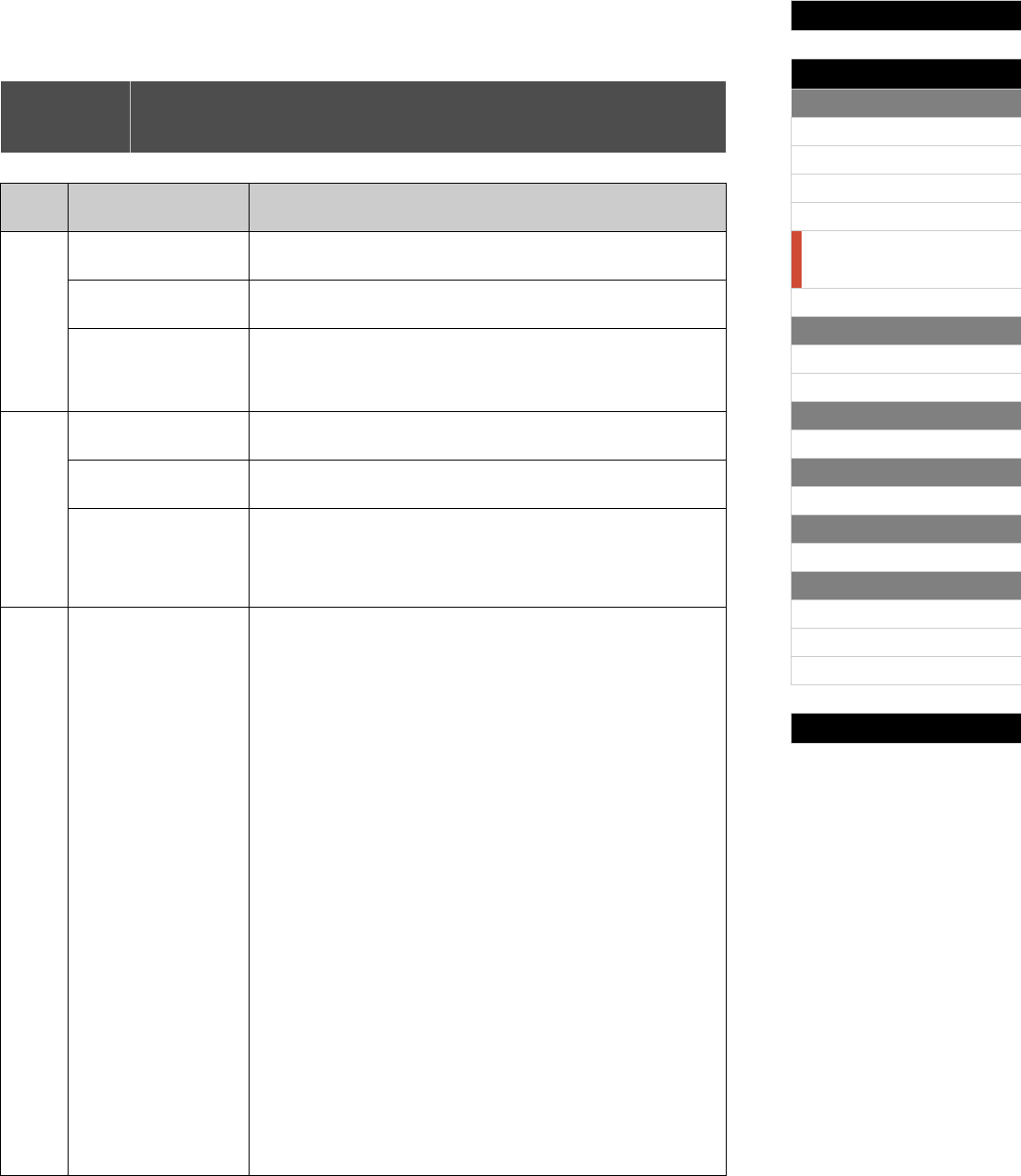
Internal Design of the CP5 & CP50
Reference
Left & Right Parts
[VOICE]
[PRE-AMP]
[MOD-FX]
[PWR-AMP] (CP5 only)
[LEFT1]/[LEFT2]/[RIGHT1]/
[RIGHT2] (CP5)
[LEFT]/[RIGHT] (CP50)
[COMMON]
Song Setting Area
[SONG SETTING]
[RECORD]
TRACK Part
[TRACK]
MIC INPUT Part
[MIC INPUT] (CP5 only)
Settings for All Parts
[REVERB]
Settings for All Performances
[MASTER COMPRESSOR]
[UTILITY]
[FILE]
Appendix
27 CP5/CP50 Reference Manual
Other Settings for Left & Right
This section describes how to set volume, panning, note limits, and other parameters for left and
right parts. The Part Setting screen is shown on page 11.
Edit Sequence
Press and hold (for at least one second) the [LEFT 1], [LEFT 2], [RIGHT 1], or [RIGHT 2]
button (CP5), or the [LEFT] or [RIGHT] button (CP50)
Navigate to the required page
using the [ PAGE] and [PAGE ] buttons Turn or press Knobs 1 to 3
Page
On-screen name
(and full name)
Description
1 Volume This parameter is used to adjust the part’s output level.
Setting values: 0 to 127
Pan This parameter is used to adjust the part’s stereo panning.
Setting values: L63 (far left) to C (center) to R63 (far right)
RevSend (Reverb Send) This parameter is used to set how much of the part’s output signal is sent to
the Reverb block. Higher values produce a more pronounced reverb
sound.
Setting values: 0 to 127
2 NoteSht (Note Shift) This parameter is used to adjust the part’s pitch in steps of one semitone.
Setting values: -24 to +24 (semitones)
Detune This parameter is used to fine tune the part’s pitch in steps of 0.1 Hertz.
Setting values: -12.8 to +12.7 (Hz)
PBRange
(Pitch Bend Range)
This parameter is used to set the degree to which the Pitch Bend wheel
changes the pitch of the current part in steps of one semitone. With a set-
ting of 12, for example, the Pitch Bend wheel can change the pitch
between -12 (i.e., one octave down) and +12 (i.e., one octave up).
Setting values: 0 to 12
3 TuningNo.
(Micro Tuning Number)
This parameter is used to select a musical tuning system. In total, your CP5
or CP50 can replicate seven tuning systems. While the Equal Temperament
tuning system has now become standard for pianos, a wide number of
other systems were developed over the years before it was adopted, and
these systems invariably paved the way for the birth of new musical styles.
By selecting a different tuning system, you can play tunes from the corre-
sponding styles of music and enjoy their unique nuances.
Setting values:
00 Equal Temp (Equal Temperament)
The range of pitches in each octave is divided equally into twelve parts,
with each half-step evenly spaced in pitch. Today, this is by far the most
popular tuning system for pianos.
01 PureMaj (Pure Major)
02 PureMin (Pure Minor)
These two tuning systems preserve the pure mathematical intervals of each
scale, especially for triad chords (root, third, fifth). These characteristics are
best heard in vocal harmonies — such as choirs and a cappella singing.
03 Pythag (Pythagorean)
This scale was devised by the famous Greek philosopher, Pythagoras, and
is created from a series of perfect fifths, which are collapsed into a single
octave. The thirds in this tuning are not so smooth, but the fourths and fifths
are beautiful and suitable for certain leads.
04 MeanTn (Mean Tone)
This scale was created as an improvement on the Pythagorean scale by
making the major third interval sound smoother. It was especially popular
from the latter part of the 16th century to the end of the 18th century, with
Handel being one of its most notable users.


















